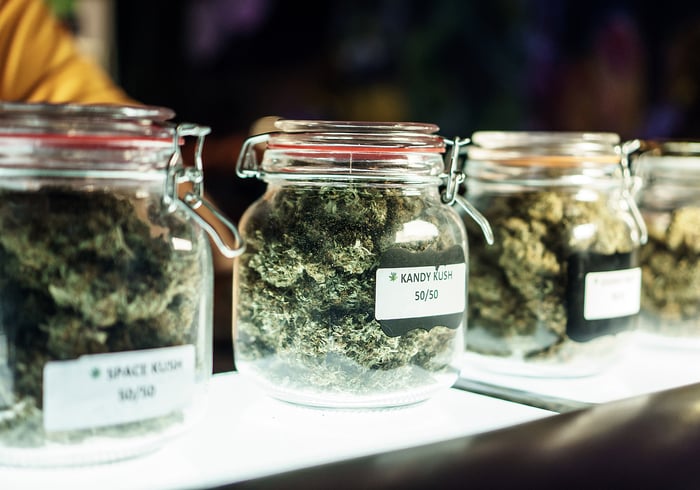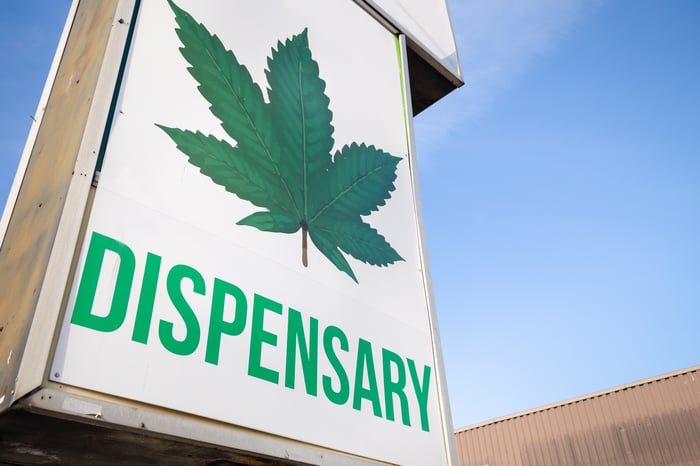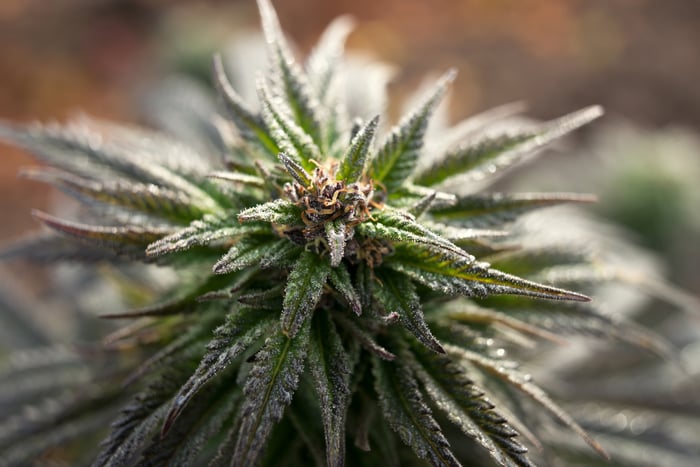You are here
Home 🌿 Recreational Marijuana News 🌿 Canada's Marijuana Sales Topped $110 Million in a Month for the First Time 🌿Canada's Marijuana Sales Topped $110 Million in a Month for the First Time

One year ago, marijuana stocks were about the hottest investment on Wall Street. Today, they're considered an investment that some wouldn't touch with a 10-foot pole.
The expectation had long been that Canadian pot sales would skyrocket as soon adult-use weed received the green light in licensed dispensaries. Unfortunately, things didn't go as planned, with persistent supply issues keeping product off retail shelves, thereby allowing the black market to thrive.

Canadian marijuana sales surged to an all-time high in December
However, according to recently released monthly sales data from Statistics Canada, it looks as if our neighbor to the north might finally be turning the corner.
In the latest release, which details retail sales data from all industries in December, licensed cannabis store revenue leaped to an all-time high. After surpassing $100 million (that's U.S.) in sales for the first time in November, they topped $110 million in December.
Here's a rundown of licensed cannabis store sales since adult-use weed first appeared on dispensary shelves on Oct. 17, 2018. It should be noted that Statistics Canada reports in Canadian dollars (CA$), so I've included the U.S. dollar equivalency in parentheses.
- October 2018: CA$53.68 million ($40.47 million)
- November 2018: CA$53.73 million ($40.51 million)
- December 2018: CA$57.34 million ($43.23 million)
- January: CA$54.88 million ($41.38 million)
- February: CA$51.66 million ($38.95 million)
- March: CA$60.94 million ($45.95 million)
- April: CA$74.58 million ($56.23 million)
- May: CA$85.81 million ($64.7 million)
- June: CA$91.46 million ($68.96 million)
- July: CA$107.36 million ($80.94 million)
- August: CA$125.95 million ($94.96 million)
- September: CA$122.93 million ($92.68 million)
- October: CA$128.98 million ($97.24 million)
- November: CA$135.31 million ($102.02 million)
- December: CA$146.25 million ($110.26 million)
It took 14.5 months, but the Canadian weed industry has generated more than $1 billion in aggregate sales since adult-use cannabis was launched in October 2018.

Canadian weed sales have largely been a disappointment
Of course, it's worth noting that these sales figures are considerably lower than Wall Street, and even pot companies themselves, had been expecting.
On one side of the coin, Health Canada has been an impediment. The Canadian regulatory agency has been slow to approve cultivation and sales licenses, and wound up delaying the launch of derivatives (i.e., edibles, vapes, infused beverages, concentrates, and topicals) by two months. Derivatives are a considerably higher-margin item than traditional dried cannabis flower, making it an important cog to the future profitability of marijuana stocks.
On the other side of the coin are provincial regulators, some of whom dropped the ball. Ontario, for instance, is Canada's most populous province, yet had a mere 24 open dispensaries as of the one-year anniversary of legalizing adult-use weed (Oct. 17, 2019). This lack of legal channels to sell marijuana led to supply bottlenecks in the province.

These catalysts could push Canadian pot sales much higher in 2020
While there's no denying that Canadian weed revenue has been a disappointment through 2019, there are a number of catalysts that should lead to significant licensed cannabis store sales growth in 2020.
The first significant growth driver is that derivatives are officially on dispensary shelves, as of mid-December. While it's going to take a little while for derivative inventory to build up, which is similar to what happened to dried cannabis flower following its launch in mid-October 2018, there's now a much broader selection of products available for purchase.
More specifically, derivatives are a higher-margin product that tends to speak to a younger generation of cannabis consumers. In other words, retail stores should see an uptick in not only average ticket size but in the number of consumers buying cannabis products.
The other factor at work here is that Ontario has ditched its lottery system for retail store licenses in favor of a more traditional license application vetting process. It's going to take a few months before a significant number of retail licenses are approved, but the second half of 2020 should see a significant uptick in the number of operational dispensaries. By the end of 2020, regulators are targeting 250 operational retail locations for the province of 14.5 million people.

Marijuana companies are halting projects or idling farms to counteract early-stage supply problems
But in spite of this expected growth, we've witnessed quite a few cannabis stocks scaling back their production capacity to account for early stage supply issues. For instance, both HEXO (NYSE:HEXO) and OrganiGram Holdings (NASDAQ:OGI) have chosen to idle or halt expansion activity in the near term.
HEXO announced in October that, as part of a cost-reduction effort that also featured 200 layoffs, it would idle its 240,000-square-foot Niagara facility, which was acquired when it purchased Newstrike Brands, as well as 200,000 square feet of its flagship Gatineau campus in Quebec. HEXO wasn't specific as to how much production capacity is currently being idled, but I'd estimate it to be close to 50,000 kilos per year, or roughly a third of its peak potential.
As for OrganiGram, it's held off on the final phase of its expansion project at its lone facility in Moncton, New Brunswick. This final expansion (dubbed Phase 4C) is capable of adding 24,000 kilos of annual output, but this doesn't appear to be a pressing concern with the company on track for an expected 89,000 kilos of annual run-rate output even with this final project on hold. OrganiGram's unique three-tiered growing system produces some of the highest yields per square foot in the industry, so these early-stage supply problems aren't a huge concern.
However, far more pot stocks fall into HEXO's camp than OrganiGram's in that they're scrambling to scale back costs and conserve capital. Things are improving in the pot industry to our north, but they still have a long way to go before investors are going to place their trust in Canadian marijuana stocks once more.
420 Intel is Your Source for Marijuana News
420 Intel Canada is your leading news source for the Canadian cannabis industry. Get the latest updates on Canadian cannabis stocks and developments on how Canada continues to be a major player in the worldwide recreational and medical cannabis industry.
420 Intel Canada is the Canadian Industry news outlet that will keep you updated on how these Canadian developments in recreational and medical marijuana will impact the country and the world. Our commitment is to bring you the most important cannabis news stories from across Canada every day of the week.
Marijuana industry news is a constant endeavor with new developments each day. For marijuana news across the True North, 420 Intel Canada promises to bring you quality, Canadian, cannabis industry news.
You can get 420 Intel news delivered directly to your inbox by signing up for our daily marijuana news, ensuring you’re always kept up to date on the ever-changing cannabis industry. To stay even better informed about marijuana legalization news follow us on Twitter, Facebook and LinkedIn.




